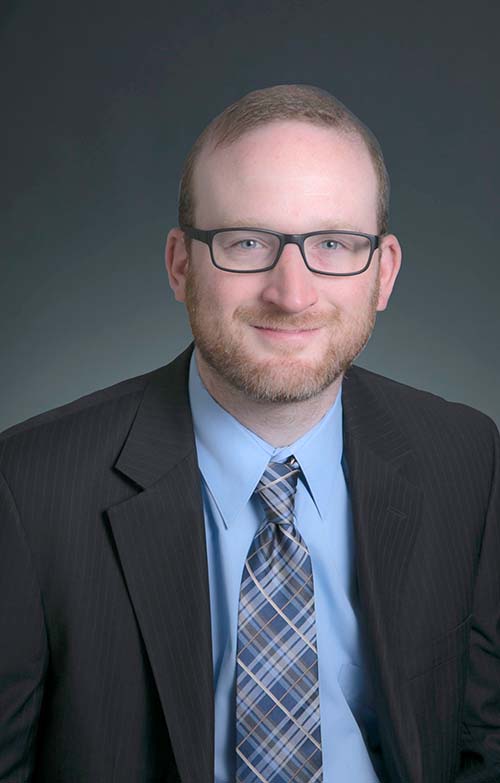Show Notes

Stuart Samberg, PE, PTP, PTOE, RSP, DBIA | Director, Traffic | Richmond, VA
Many of the top international minds on highway and traffic design are meeting this week in Amsterdam, the Netherlands as part of the 6th International Symposium on Highway Geometric Design. The symposium focuses on the latest breakthrough practices relating to highway engineering and innovative design.
Stuart Samberg, PE, PTP, PTOE, RSP, DBIA, Director, Traffic was selected to present at the symposium to discuss innovative intersections to help people get to where they need to go in a more efficient and safe manner. We recently chatted with Stuart to discuss his experiences with innovative intersections, how it impacts RK&K’s project designs across the U.S., and what’s next for highway design.
Stuart, thanks for chatting with us. Innovative intersections are seemingly everywhere right now. What are they designed to do?
The main purpose behind innovative intersections is to try and address capacity and safety issues for all users by modifying traditional movements in slight ways to achieve these goals. The most notable objective of innovative intersections is to remove the traditional left turn – which is the worst performing movement at an intersection, and a key contributor to the most severe crashes we see at any given location. By making this movement make a right and a U-turn we achieve a much safer system for all users.
How has the thinking on innovative intersections evolved over the years, both from an engineering and a public view?
From an engineering perspective, I have seen innovative intersections take on an entirely new life during my career. When I started out, the discussion around innovative intersections revolved almost entirely around roundabouts (which are without a doubt the safest kind of intersection out there), and single-point interchanges. Now, the field of study is vast, and includes anything under the sun that is available to achieve the stated goals. Here at RK&K we routinely not only employ innovative ideas which are part of the canon of concepts placed out there by the Federal Highway Administration (FHWA) and State DOTs, but we also routinely produce variations on these ideas to be site-specific in our approach.
From the public perspective, it takes time for people to adapt to innovation and a new way of thinking. While there is an adjustment period to ease their concerns, being proactive with public outreach and education helps prepare drivers for what to expect.
How does your presentation address public concern?
Research on innovative intersections is vast and covers many different topics from geometric design to safety to operations. However, the focus on researching these topics at the macro level has left several gaps at the micro level. The purpose of my presentation and paper is to try and start addressing one of those micro gaps – and one that frequently comes up in public discourse. I am focused on the safety of arterial weave maneuvers – or the safety of changing lanes over a short distance, such as getting from the right-most lane to the left-most lane to make a U-turn. My goal was to find that these movements do not pose a safety risk so that we can comfort the public that these intersections will not be a problem.
Your research involved eight different innovative intersections across Virginia. What did the data show regarding safety?
The data shows what we were hoping from the start; these intersections do not pose a significant safety risk. At under one crash per year associated with the arterial weave movement itself, the randomness (and at a low level) of these crashes is a sign that these locations are operating as intended. Also of crucial importance is that the crashes that did occur were all very low-severity, so low numbers and no fatalities or injuries is always a sign that we are moving toward our goals. The biggest surprise was the consistency of the results, which is a good sign!
How has your research on innovative intersections influenced your approach to traffic design?
As we go through the design process, questions will come up, such as: “How safe is it going to be to move across those two lanes,” and I wanted to be able to answer that question in an honest way that not only helped us, helped our projects, but also was a benefit to the community at large.
Where do you see innovative intersection design heading next?
That is really the purpose of this conference in Amsterdam – where are we headed next, and I am excited to hear from some of the best minds on these topics worldwide. Obviously, our issues in the U.S. are different than in a lot of countries, but I do think the next frontier for innovative intersections in the U.S. is how do we safely incorporate other modes of transportation. Right now, the focus on safety and operations for innovative intersections has primarily been about cars. But within the urban contexts that are often our greatest need for innovation, we have modes other than vehicles, including bikes, pedestrians, scooters, and public transit. How do we safely incorporate them into our planning and design for these locations such that we create the type of truly safe system that works for all users and all abilities.
Stuart Samberg is part of team responsible for traffic operations in RK&K’s Southeast offices. He is responsible for all facets of transportation engineering, from planning and analysis to design. This includes traffic studies, signal design and timing optimization, ITS, corridor studies, traffic signing and marking plans, maintenance of traffic plans, street lighting, and intersection geometric improvements.
Ready to work with us? Get started today!
 [JPG, 139.58 KB]
[JPG, 139.58 KB]